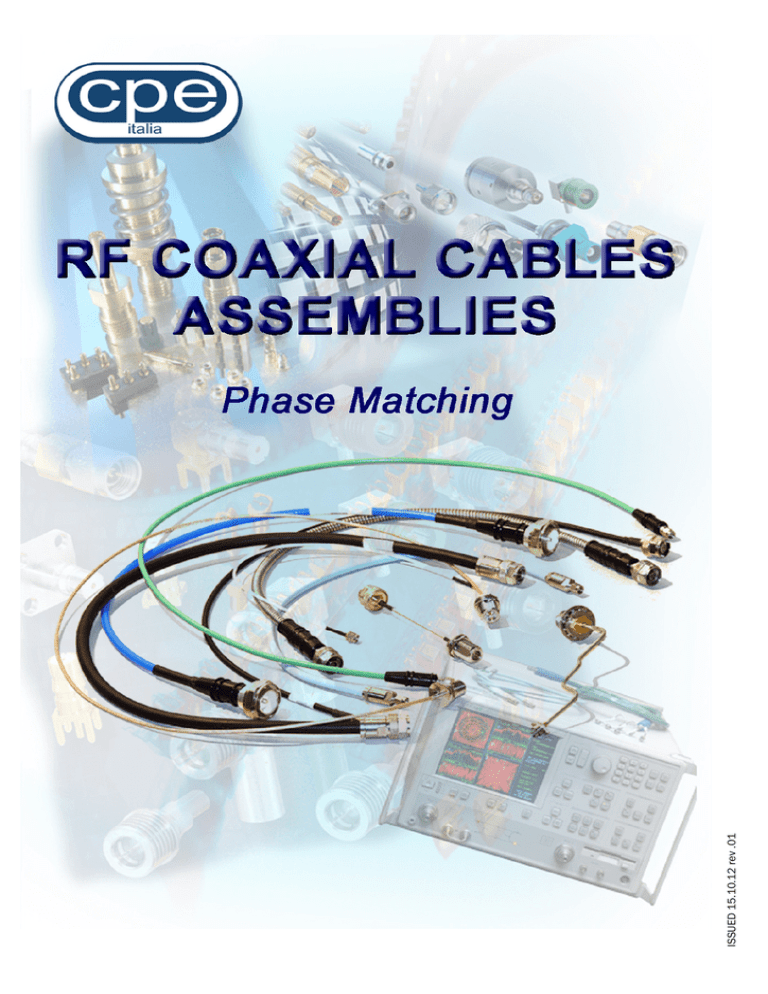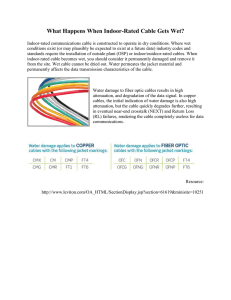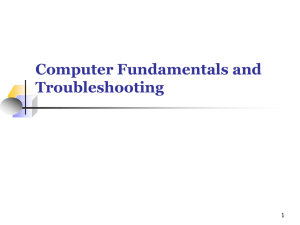
ISSUED 15.10.12 rev .01
CPE group provides its customers with a complete set of RF cable assemblies – flexible, semirigid, corrugated, conformable, phase matched – compliant with the more stringent industry
specifications.
Nowadays the microwave world needs a lot of phase matched coaxial cable sets. CPE group,
thanks to the excellence of its RF lab and production line, has the capability to manufacture high
volumes of tightly controlled phase matched coaxial cables. Due to the inevitable variations in
connector and cable manufacturing process and assembly, phase matching can be considered
an art more than a technology and requires the great experience of our in-house designers and
state of the art RF instruments. Both these factors allow to obtain a wide variety of phase
matched cable assemblies compliant with the customer’s specifications at competitive costs.
Applications
•
•
•
•
Phased Array Radars
Multi-Beam Antenna Arrays
RF Combiners and Filters
High Power Amplifier / Multi – Channel Amplifier
Features and Benefits
•
•
•
•
•
•
•
Customized cable assembly design & development
Max operating frequency equal to 26.5 GHz
Wide temperature range
Any type of cable and connector series
Cable pairs or sets
Different complex shapes
Delay line and coils
Considerations about phase matched coaxial cable assemblies
Many modern microwave applications require cable assemblies with the same electrical length, also
named phase length. Because it is impossible to have zero phase tolerance among cables in the same
set, that cables are manufactured with a reasonable match tolerance in phase, depending on the frequency range of operation, the cable length, the velocity of propagation, the temperature, the bending and the
connectors used. Phase matching can be absolute, if the cable phase is compared with a defined value,
or relative, if the cable assemblies in the same set are matched to each other. Phase matching is specified as electrical delay in time (typically nanoseconds) or degrees at a specified frequency of operation. A
typical phase match is ± 1°/GHz for semi-rigid cables and ± 2°/GHz for flexible cables. An electrical delay
can be converted into a physical length, in particular when the cable is very stable and consistent. To obtain the phase matching, it is usually convenient to specify the desired electrical match and the minimum
mechanical length, where the length is the variable used to matching the phase.
Frequency range of operation
At higher operating frequencies it is more difficult to achieve a close phase match. Tight tolerances will
require tight physical cut tolerances and increased manufacturing efforts and costs.
Cable length
The phase matching is very difficult when long cable assemblies are used. In this case wider phase
match windows are needed and tighter phase tolerances are obtained with increased manufacturing efforts and costs.
Velocity of propagation
The velocity of propagation Vp of a cable is expressed as a percentage of the velocity of the light in the
free space. It is inversely proportional to the square root of the relative dielectric constant of the cable.
Higher Vp cables are longer for a given electrical delay, while lower Vp cables are shorter. A tight control
of Vp eases the phase matching process, providing cables with more similar physical length. Tab. 1 provides a list of common dielectrics, their delay and Vp.
Dielectric
Delay [ns/ft]
Vp [%]
Solid PE
1.54
66
Foam PE
1.27
80
Foam PS
1.12
91
Air space PE
1.15 – 1.21
84 - 88
Solid PTFE
1.46
70
Tape wrap PTFE
1.33
76
Air space PTFE
1.13 – 1.20
85 - 90
Tab. 1: List of common dielectrics with related delays and Vp
Note that cables with solid dielectric cores and lower Vp are in general mechanically strongest, but they
have greater insertion loss and phase changes as a function of temperature. Cables with high air content
and higher Vp are mechanically weaker, but they have low insertion loss and excellent phase behavior
vs. temperature
3
Small changes in Vp have a great impact on the electrical length of the cables. As an example, let’s consider a 3 m long cable assembly at 18 GHz with nominal Vp = 82%. Let’s suppose that, due to manufacturing and material variations, Vp ranges from 81% to 83%.
At f = 18 GHz the wavelength ʎ in the free space is ʎ = c/f = 0.0167 m, where c = 3*108 m/s is the speed
of light in the free space. The effective wavelength ʎc in the coaxial cable is ʎc= Vp* ʎ . When Vp = 82%, it
is ʎc = 0.0137 m and the electrical length of the 3 m long cable is equal to 219 wavelengths, that means
78840 degrees almost (note that one wavelength corresponds to 360 degree phase shift). Reducing Vp
at 81 %, we obtain ʎc = 0.0135 m, while the electrical length of the cable becomes 222.2 wavelengths,
that means 79992 degrees almost. Increasing Vp at 83 %, we obtain ʎc = 0.0139 m, while the electrical
length of the cable becomes 215.8 wavelengths, that means 77688 degrees almost. In these conditions
the phase matching requires a length tolerance of ± 4.4 cm.
Temperature
The electrical length of a coaxial cable changes with temperature. This change is given in parts per million per degrees centigrade [ ppm / °C ]. Fig. 1 shows the not linear temperature dependence of the
phase change of cables with different velocities of propagation.
Fig. 1: Phase change vs. temperature for coaxial cables with different Vp
Note that higher Vp cables, smaller phase changes over the most temperature range. It is evident that the
phase matching of cables of the same set has to be made in a temperature controlled area.
Other
The connectors at the ends of the cables influence the cable phase matching: it simpler to phase match
cable assemblies with the same connectors on both ends than assemblies with different connectors, due
to the higher phase uncertainty introduced by different connectors.
A tighter cable bend radius increases phase change and increasing the number of flexures on the cables
also increases phase change. Consequently fixtures simulating the installation cable bends have to be
used during the matching process.
Methods for phase matching
CPE group uses different methods for phase matching sets of cables:
• matched to a standard
• matched to other cables in the same set
• custom
Matched to a standard
The phase standard consists of a ‘gold’ hardware standard, that means a defined and known electrical
length in degrees at a given frequency and temperature. If the assemblies are phase matched to a gold
standard, they are interchangeable. Fig. 2 shows a CPE phase matched assemblies (UFB 311A cable
terminated with SMA in one side and TNC on the other) using a gold standard. The length of the standard is 8.05m and the requested phase matching is ±5° up to 16GHz. The measurement has been made
at a controlled temperature of 25°C.
Fig. 2: Example of CPE matching to a gold standard
Matched to other cables in the same set
Cable assemblies matched in a set are only guaranteed to be matched to other cables in the same set.
Due to the fact that phase between two sets can differ substantially, co-mixing cables have to be avoided. This method increases yields, lowering the cost.
Custom
Phase matching to a standard provided by the customer, or providing cable assemblies with defined
phase offset with respect to each other, or following customer requests.
Phase tracking
The ability of the coaxial cable assemblies to tightly reproduce their phase characteristics with respect to
each other over a range of temperature, bending, flexure is known as phase tracking. Essentially the
phase tracking measures the mechanical consistency of the assemblies.
The phase tracking due to the temperature changes is optimized if all the cables in the set are in the
same thermal environment. Thermal cycling artificially ages the cables or stabilizes them, improving
tracking characteristics.
5
CPE WORLDWIDE
MILANO - ITALIA
TEXAS - USA
COMMERCIAL OFFICE
HEAD QUARTER
PASTORANO - ITALIA
MANUFACTURING PLANT
SLATINA - ROMANIA
MANUFACTURING PLANT
USA - TEXAS
DELHI - INDIA
COMMERCIAL OFFICE
WUXI - CHINA
MANUFACTURING PLANT
COMMERCIAL OFFICE
CURITIBA - BRAZIL
MANUFACTURING PLANT
CPE Italia S.p.A.— Componenti professionali per l’elettronica
HEADQUARTER
Via D. Chiasserini, 15 - 20157 Milano - Italia
Tel.+39 02 390961 - Fax +39 02 3570765 - +39 02 3570765
Our subsidiaries :
CPE do Brasil Ind.& Com. Ltda
Rua Inaja, 698 Vila E. Perneta BR-83.324.050 PINHAIS-PR/ Brasil
Tel. +55 41 3033 6883 Fax +55 41 3668 6883
CPE East Europe (C.G.B.) Sos Draganesti, Km. 4 Loc. Slatina, Jud.Olt (Romania)
Tel. +40.349408174 Tel. +40.349408175
CPE Wuxi Electronics Ltd. Xi Nan Road (Xue Lang, Ban Qiao) Bin Hu District, Wuxi City, Jiang Su, P.R.China, 214125
Tel. +86(0)51085189768 Fax +86(0)510 85188016
CPE India Private Limited: Registered Office : 405/406 AKD Tower, Sector 14 Gurgaon-122 001 Haryana
Tel. +91 9811194745
© all rights reserved of CPE Italia S.p.A.




